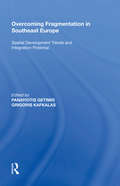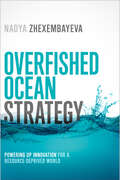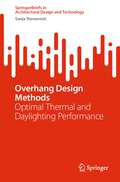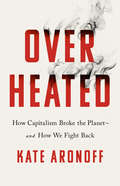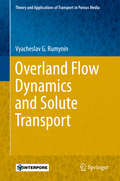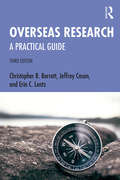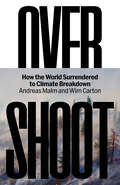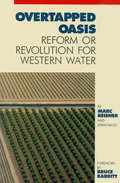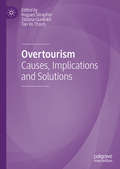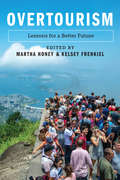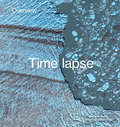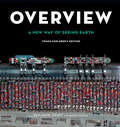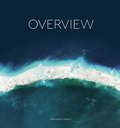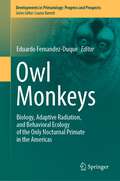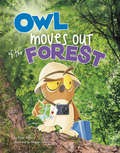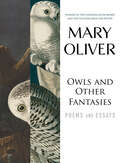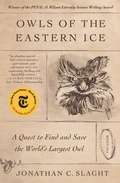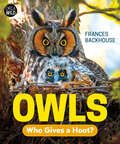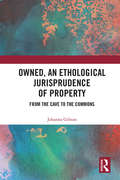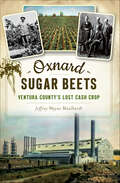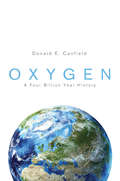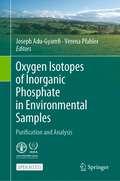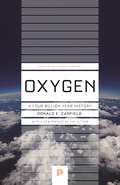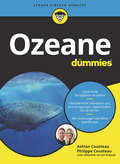- Table View
- List View
Overcoming Fragmentation in Southeast Europe: Spatial Development Trends and Integration Potential (Urban And Regional Planning And Development Ser.)
by Panayiotis GetimisWith the expansion of the European Union, the countries of Southeast Europe have finally been brought together within one socio-political entity. The restructuring of these economies following globalization and neoliberalization has meant that this region has become much more open to geopolitical shifts and trends. While the various countries have all entered into the slow process of European integration, the historic fragmentation of this region has led to various conflicts and contradictions in the restructuring and transition of national economies. This volume provides a theoretical and comparative overview which examines the prospects for spatial cohesion in this region. With the need to handle persisting problems and conflicts from the past while coping with new economic and political structures, Southeast Europe proves to be a challenging yet fruitful testing ground for how best to overcome fragmentation and establish a long-term process of social and economic integration.
Overfished Ocean Strategy: Powering Up Innovation for a Resource-Deprived World
by Nadya ZhexembayevaWe all know the proverb about teaching someone to fish, but if there are no fish left, knowing how to catch them won&’t do you any good. And that&’s the position businesses are in today. Resources are being depleted at an alarming rate and the cost of raw materials is rising dramatically. As a result, scholar and entrepreneur Nadya Zhexembayeva says, businesses need to make resource scarcity—the overfished ocean—their primary strategic consideration, not just a concern for their &“green&” division. Overfished Ocean Strategyoffers five essential principles for innovating in this new reality. Zhexembayeva shows how businesses can find new opportunities in what were once considered useless by-products, discover resource-conserving efficiencies up and down their value chain, transfer their expertise from physical products to services, and develop ways to rapidly try out and refine these new business models. She fills the book with examples of companies that are already successfully navigating the overfished ocean, from established corporations such as BMW, Microsoft, and Puma to newcomers such as Lush, FLOOW2, and Sourcemap. The linear, throwaway economy of today—in which we extract resources at one end, create products, and throw them away at the other—is rapidly coming to an end. In every industry, creative minds are learning how to make money by taking this line and turning it into a circle. Nadya Zhexembayeva shows how you can join them and avoid being left high and dry.
Overhang Design Methods: Optimal Thermal and Daylighting Performance (SpringerBriefs in Architectural Design and Technology)
by Sanja StevanovicIt is estimated that windows in office buildings are responsible for one third of energy used for their heating and cooling. Designing window shading that balances often contradictory goals of preventing excessive heat gains in hot periods, without compromising beneficial heat gains in cold periods or visual comfort in indoor spaces of modern buildings with highly glazed facades, is an interesting multi-objective optimisation problem that represents an active research topic in the field of building energy and daylighting. Window overhangs are the simplest and most traditional shading devices that are easy to install, highly cost-effective, require low or no maintenance and offer unobstructed views outside. This book provides a review of overhang design methods for optimal thermal and daylighting performance. It starts with a historical overview of methods based on solar positions and shading masks. Next it discusses current research methodology, including shading calculation methods, ways of quantifying thermal and daylighting overhang effectiveness and the use of multi-objective optimisation approaches, together with the case studies that employ them. It further covers methods for designing innovative overhang types such as NURBS outlined overhangs and PV integrated dynamic overhangs. The appendix classifies published overhang case studies according to major climate type and latitude of their locations. As such, the book presents a valuable resource for understanding subtle nuances of interaction between solar radiation, shading devices and indoor comfort. The intended target audience are building energy researchers interested in optimisation of window shading devices.
Overheated: How Capitalism Broke the Planet--And How We Fight Back
by Kate AronoffThis damning account of the forces that have hijacked progress on climate change shares a bold vision of what it will take, politically and economically, to face the existential threat of global warming head-on.In the past few years, it has become impossible (for most) to deny the effects of climate change and that the planet is warming, and to acknowledge that we must act. But a new kind of denialism is taking root in the halls of power, shaped by a quarter-century of neoliberal policies, that threatens to doom us before we've grasped the full extent of the crisis.As Kate Aronoff argues, since the 1980s and 1990s, economists, pro-business Democrats and Republicans in the US, and global organizations like the UN and the World Economic Forum have all made concessions to the oil and gas industry that they have no intention of reversing. What's more, they believe that climate change can be solved through the market, capitalism can be a force for good, and all of us, corporations included, are fighting the good fight together.These assumptions, Aronoff makes abundantly clear, will not save the planet. Drawing on years of reporting and rigorous economic analysis, Aronoff lays out a robust vision for what will, detailing how to constrain the fossil fuel industry; transform the economy into a sustainable, democratic one; mobilize political support; create effective public-private partnerships; enact climate reparations; and adapt to inevitable warming in a way that is just and equitable.Our future, Overheated makes clear, will require a radical reimagining of our politics and our economies, but if done right, it will save the world.
Overland Flow Dynamics and Solute Transport
by Vyacheslav G. RumyninThis book provides essential background knowledge on a wide range of hydrological processes governing contaminant transport from soil to surface water across a range of scales, from hillslope to watershed. The mathematical description of these processes is based on both well-known and unique analytical solutions of different initial and boundary problems (primarily using methods from the kinematic wave theory and the reservoir/lumped-parameter concept), supported by numerical modelling studies. Some research topics, in particular several case studies, are illustrated by monitoring and experimental data analysis to show the importance of the research's applications in environmental practice and environmental education. Specific results concern the recognition of: (a) the effect of transient rainfall-runoff-infiltration partitioning on the chemical response of drainage areas to excess precipitation under certain field conditions related to the soil, hillslope characteristics, and contaminant properties; (b) soil erosion as a key factor that enhances the potential of adsorbed chemical transport in runoff; and (c) common tendencies in radionuclide behaviour in the near-surface environment contaminated by radioactive fallout from the Chernobyl (1986), Fukushima (2011) and the less known Kyshtym (1957) accidents, as well as from nuclear weapon tests in the atmosphere since 1952. The book's goal is to provide a conceptual foundation enabling readers to apply scientific knowledge to solve practical problems in environmental hydrology and radiology. More specifically, the book presents the state-of-the-art approaches that scientists and natural resources experts need in order to significantly improve the prediction of changes in the soil-water system chemistry due to human activities.
Overseas Research: A Practical Guide
by Christopher B. Barrett Jeffrey Cason Erin C. LentzWhen conducting research in developing countries, an ability to negotiate a bewildering array of cultural and logistical obstacles is essential. Overseas Research: A Practical Guide distills essential lessons from scores of students and scholars who have collected data and done fieldwork abroad, including how to prepare for the field, how and where to find funding for one’s fieldwork, issues of personal safety and security, and myriad logistical and relational issues. By encouraging researchers to think through the challenges of research before they begin it, Overseas Research will help prepare fieldworkers for the practical, logistical, and psychological considerations of very demanding work, help save valuable time, make the most of scarce financial resources, and enhance the quality of the field research. This third edition contains new material on social media, including representation of research subjects/collaborators, students’ digital branding and image, and representing universities abroad when posting publicly. It also covers emerging technologies such as solar panels for power in remote locations, new ways of digitally sending and receiving money, and incorporates more perspectives of women, LGBTQ+ people, and people of color researching abroad. The book will be of interest to overseas fieldworkers, and also to undergraduates in subjects such as anthropology, economics, geography, history, international studies, politics, sociology, and development studies.
Overshoot: How the World Surrendered to Climate Breakdown
by Andreas Malm Wim CartonA scathing critique of proposals to geoengineer our way out of climate disaster by the bestselling author of How to Blow Up a PipelineIt might soon be far too hot on this planet. What do we do then? In the era of "overshoot," schemes abound for turning down the heat–not now, but a few decades down the road. We&’re being told that we can return to liveable temperatures by means of technologies for removing CO2 from the air or blocking incoming sunlight.If they even exist, such technologies are not safe.They come with immense uncertainties and risks. Worse, like magical promises of future redemption, they might provide reasons for continuing to emit in the present. But do they also hold some potentials? In Overshoot two leading climate scholars subject the plans for saving the planet after it&’s been wrecked to critical study. Carbon dioxide removal is already having effects, as an excuse for continuing business as usual, while geoengineering promises to bail out humanity if the heat reaches critical levels.Both distract from the one urgent task: to slash emissions now. There can be no further delay. The climate revolution is long overdue, and in the end, no technology can absolve us of its tasks.
Overtapped Oasis: Reform Or Revolution For Western Water
by Marc Reisner Sarah F. BatesOvertapped Oasis analyzes the West's water allocation system from top to bottom and offers dozens of revolutionary proposals for increased efficiency and policy reform. Marc Reisner and Sarah Bates argue that the West's underlying problem is not a shortage of water but the inefficient use of it, a problem caused by a bewildering tangle of federal subsidy programs, restrictive state water codes, anachronistic irrigation practices and -- perhaps most important -- resistance to reform.
Overtourism: Causes, Implications and Solutions
by Tatiana Gladkikh Hugues Séraphin Tan Vo ThanhThe term ‘overtourism’ has come into prominence since 2017 and refers to the fact that, due to various factors such as more sophisticated marketing strategies, a large number of tourists visit the same place at the same time. The consequences are felt by the locals, the tourists themselves as well as the environment. As a result, tourismphobia and anti-tourism movements have emerged as ways for locals to reclaim their lifestyle by refusing to interact with visitors and sometimes discouraging them to visit.This book presents new research on this emerging phenomenon and discusses the main causes and implications before putting forward possible solutions. The authors take an interpretivist approach in order to unveil aspects of overtourism that have not yet been discussed. It provides case studies and explores topics such as tourism education, overtourism of cultural and heritage sites, and the need for sustainable tourism development.
Overtourism: Lessons for a Better Future
by Dr Martha HoneyBefore COVID-19 hit, the biggest problem in the world of travel was overtourism. Crowds threatened to spoil natural environments and make daily life unbearable for residents of popular travel destinations. Then, seemingly overnight, tourism nearly ceased. Yet there is no question that travel will resume; the only question is, when it does, what will it look like? Will we return to a world of overrun monuments, littered beaches, and gridlocked city streets? Or can we do things differently this time?Overtourism: Lessons for a Better Future charts a path toward tourism that is not only sustainable but regenerative for the places we love and the people who live there. Bringing together tourism officials, city council members, travel journalists, consultants, scholars, and trade association members, this practical book explores overcrowding from a variety of perspectives. After examining the causes and effects of overtourism, it turns to management approaches in five distinct types of tourism destinations:1. historic cities;2. national parks and protected areas;3. World Heritage Sites;4. beaches and coastal communities; and5. destinations governed by regional and national authorities. While each location presents its own challenges, common mitigation strategies are emerging. Visitor education, traffic planning, and redirection to lesser-known sites are among the measures that can protect the economic benefit of tourism without overwhelming local communities.As tourism revives around the world, these innovations will guide government agencies, parks officials, site managers, civic groups, environmental NGOs, tourism operators, and others with a stake in protecting our most iconic places.
Overview Timelapse: How We Change the Earth
by Benjamin Grant Timothy DoughertyA stunning and unique collection of satellite images of Earth that offer an unexpected look at humanity, derived from the wildly popular Daily Overview Instagram project.Inspired by the &“Overview Effect&”—a sensation that astronauts experience when given the opportunity to look down and view the Earth as a whole—the breathtaking, high definition satellite photographs in OVERVIEW offer a new way to look at the landscape that we have shaped. More than 200 images of industry, agriculture, architecture, and nature highlight incredible patterns while also revealing a deeper story about human impact. This extraordinary photographic journey around our planet captures the sense of wonder gained from a new, aerial vantage point and creates a perspective of Earth as it has never been seen before.
Overview, Young Explorer's Edition: A New Way of Seeing Earth
by Sandra Markle Benjamin GrantDiscover Earth as you've never seen it before, in this stunning and unique collection of satellite images that offer an unexpected look at our planet. A perfect gift for young National Geographic fans and atlas enthusiasts!When astronauts look down at our planet and see its vibrant surface shining against the blackness of space, they experience the Overview Effect--a sense of awe, an awareness that everything is interconnected, and an overwhelming desire to take care of our one and only home.Overview: Young Explorer's Edition, newly adapted for young readers from the adult book Overview, captures this sense of wonder and shares it with readers without having to leave the ground. Extraordinary aerial photographs reveal Earth's natural beauty and show the surprising, fascinating, and destructive ways humans have impacted our environment. This eye-opening visual journey will forever change the way we see our home planet.
Overview: A New Perspective of Earth
by Benjamin GrantA stunning and unique collection of satellite images of Earth that offer an unexpected look at humanity, derived from the wildly popular Daily Overview Instagram project.Inspired by the "Overview Effect"--a sensation that astronauts experience when given the opportunity to look down and view the Earth as a whole--the breathtaking, high definition satellite photographs in OVERVIEW offer a new way to look at the landscape that we have shaped. More than 200 images of industry, agriculture, architecture, and nature highlight incredible patterns while also revealing a deeper story about human impact. This extraordinary photographic journey around our planet captures the sense of wonder gained from a new, aerial vantage point and creates a perspective of Earth as it has never been seen before.From the Hardcover edition.
Owl Monkeys: Biology, Adaptive Radiation, and Behavioral Ecology of the Only Nocturnal Primate in the Americas (Developments in Primatology: Progress and Prospects)
by Eduardo Fernandez-DuqueThis book integrates three decades of owl monkey research conducted since 1994 when the first and only book focused on the genus Aotus was published. Owl monkeys were one of the least understood primates then; knowledge from wild populations was only beginning to emerge and there had been some substantial research in colonies of captive individuals. The situation is very different today. Research on captive owl monkeys has continued to develop, with valuable contributions to the health and medical sciences. And there is now enough information on the behavior, ecology, conservation, and biogeography of the genus that merits a synthesis. The book synthesizes new field data on the biogeography, behavioral ecology, circadian biology, population biology and demography spanning their entire continental range from Panamá to Argentina. It includes theoretical perspectives drawn from evolutionary biology, biological anthropology, anatomy, morphology and physiology, genetics, endocrinology and conservation biology to examine a specic set of adaptations that have allowed owl monkeys to exploit the nocturnal niche while functioning in a pair-living sexually monogamous system with remarkable patterns of paternal care. The author, with 30 years of research experience with both captive and wild primates, has directed the longest project on any owl monkey species and has conducted extensive original research on their biology, adaptive radiation and behavioral ecology. His expertise and published record on both wild populations and laboratory colonies makes this book one of a kind; it presents information from both captive and wild primates and explores questions through the integration of both approaches. The volume offers some additional features that make it novel in its approach: (1) brings together a combination of senior researchers who during four decades have established captive owl monkeys as a system of study with a new generation of younger scientists who have, for the last 10-20 years, been spearheading their study in the wild, (2) presents the work of a remarkably diverse range of authors representing all countries where owl monkeys are present, as well as researchers from the U.S and Europe, and (3) offers “synthesis” chapters; in doing so, it will surely become a reference book for those specifically drawn to owl monkeys, as well as for those interested in the research topics that are covered.
Owl Moves Out of the Forest (Habitat Hunter)
by Nikki PottsOwl is bored with its habitat! Follow Owl as it tries out different places to live. Which habitat will make the best home for Owl?
Owls and Other Fantasies: Poems and Essays
by Mary OliverA perfect introduction to Mary Oliver&’s poetry, this stunning collection features 26 nature poems and prose writings about the birds that played such an important role in the Pulitzer Prize winner&’s life. Within these pages you will find hawks, hummingbirds, and herons; kingfishers, catbirds, and crows; swans, swallows and, of course, the snowy owl, among a dozen others-including ten poems that have never before been collected. She adds two beautifully crafted essays, &“Owls,&” selected for the Best American Essays series, and &“Bird,&” a new essay that will surely take its place among the classics of the genre.In the words of the poet Stanley Kunitz, &“Mary Oliver's poetry is fine and deep; it reads like a blessing. Her special gift is to connect us with our sources in the natural world, its beauties and terrors and mysteries and consolations.&”For anyone who values poetry and essays, for anyone who cares about birds, Owls and Other Fantasies will be a treasured gift; for those who love both, it will be essential reading.This book was published with two different covers. Customers will be shipped the book with one of the available covers.
Owls of the Eastern Ice: A Quest to Find and Save the World's Largest Owl
by Jonathan C. SlaghtA New York Times Notable Book of 2020Longlisted for the National Book AwardWinner of the PEN/E.O. Wilson Literary Science Writing Award and the Minnesota Book Award for General NonfictionA Finalist for the Stanford Dolman Travel Book of the Year AwardWinner of the Peace Corps Worldwide Special Book AwardA Best Book of the Year: NPR, The Wall Street Journal, Smithsonian, Minneapolis Star-Tribune, The Globe and Mail, The BirdBooker Report, Geographical, Open Letter ReviewBest Nature Book of the Year: The Times (London)"A terrifically exciting account of [Slaght's] time in the Russian Far East studying Blakiston’s fish owls, huge, shaggy-feathered, yellow-eyed, and elusive birds that hunt fish by wading in icy water . . . Even on the hottest summer days this book will transport you.” —Helen Macdonald, author of H is for Hawk, in KirkusI saw my first Blakiston’s fish owl in the Russian province of Primorye, a coastal talon of land hooking south into the belly of Northeast Asia . . . No scientist had seen a Blakiston’s fish owl so far south in a hundred years . . . When he was just a fledgling birdwatcher, Jonathan C. Slaght had a chance encounter with one of the most mysterious birds on Earth. Bigger than any owl he knew, it looked like a small bear with decorative feathers. He snapped a quick photo and shared it with experts. Soon he was on a five-year journey, searching for this enormous, enigmatic creature in the lush, remote forests of eastern Russia. That first sighting set his calling as a scientist.Despite a wingspan of six feet and a height of over two feet, the Blakiston’s fish owl is highly elusive. They are easiest to find in winter, when their tracks mark the snowy banks of the rivers where they feed. They are also endangered. And so, as Slaght and his devoted team set out to locate the owls, they aim to craft a conservation plan that helps ensure the species’ survival. This quest sends them on all-night monitoring missions in freezing tents, mad dashes across thawing rivers, and free-climbs up rotting trees to check nests for precious eggs. They use cutting-edge tracking technology and improvise ingenious traps. And all along, they must keep watch against a run-in with a bear or an Amur tiger. At the heart of Slaght’s story are the fish owls themselves: cunning hunters, devoted parents, singers of eerie duets, and survivors in a harsh and shrinking habitat.Through this rare glimpse into the everyday life of a field scientist and conservationist, Owls of the Eastern Ice testifies to the determination and creativity essential to scientific advancement and serves as a powerful reminder of the beauty, strength, and vulnerability of the natural world.
Owls: Who Gives a Hoot? (Orca Wild #13)
by Frances BackhouseKey Selling Points Owls are among the world’s most easily recognized and culturally significant birds. Although owls are extremely popular, most people rarely see them and don’t know a lot about them. This book features photos of all 19 species that live in Canada and the United States and is filled with information about these mysterious birds. It is timely because there is a strong push happening in many parts of North America to restrict the use of rodent poisons that are taking a heavy toll on owls and other predators that eat the poisoned rodents. Encourages kids to get actively involved in learning more about owls and ensuring their survival and includes profiles that present real-life examples of kids who are helping owls in various ways. Frances Backhouse is an award-winning science writer of nonfiction books for adults and kids. She has already written two books in the Orca Wild series (Beavers and Grizzly Bears ). She also has an adult nonfiction book on owls, Owls of North America .
Owned, An Ethological Jurisprudence of Property: From the Cave to the Commons
by Johanna GibsonThis book draws upon domestication science to undertake a radical reappraisal of the jurisprudence of property and intellectual property. Bringing together animal studies and legal philosophy, it articulates a critique of dominant property models and relationships from the perspective of cognitive ethology, domestication science and animal behaviour. In doing so, a radical new picture of property emerges. Focusing on the emergence of property models through prevailing ideas of human domestication and settlement, the book challenges the anthropocentrism that informs standard approaches to ownership and to authorship. Utilising a wide range of examples from ethology and animal studies, the book thus rethinks the very nature of property as uniquely human. This highly original contribution to the fields of property and intellectual property will appeal not only to legal scholars in these areas, as well as in animal law, but also to legal theorists and others working in the social sciences with interests in posthumanism and animal studies.
Oxnard Sugar Beets: Ventura County's Lost Cash Crop (Lost)
by Jeffrey Wayne MaulhardtIn the early 1890s, farmers Albert Maulhardt and John Edward Borchard discovered Ventura County's favorable conditions for a highly profitable new cash crop: the sugar beet. Not long after inviting sugar mogul Henry T. Oxnard to the area, construction began on a $2 million sugar factory capable of processing two thousand tons of beets daily. The facility brought jobs, wealth and the Southern Pacific rail line. It became one of the country's largest producers of sugar, and just like that, a town was born. Despite the industry's demise, the city of Oxnard still owes its name to the man who delivered prosperity. A fifth-generation descendant, local author and historian Jeffrey Wayne Maulhardt details the rise and fall of a powerful enterprise and the entrepreneurial laborers who helped create a city.
Oxygen
by Donald E. CanfieldThe air we breathe is twenty-one percent oxygen, an amount higher than on any other known world. While we may take our air for granted, Earth was not always an oxygenated planet. How did it become this way? Oxygen is the most current account of the history of atmospheric oxygen on Earth. Donald Canfield--one of the world's leading authorities on geochemistry, earth history, and the early oceans--covers this vast history, emphasizing its relationship to the evolution of life and the evolving chemistry of the Earth. With an accessible and colorful first-person narrative, he draws from a variety of fields, including geology, paleontology, geochemistry, biochemistry, animal physiology, and microbiology, to explain why our oxygenated Earth became the ideal place for life. Describing which processes, both biological and geological, act to control oxygen levels in the atmosphere, Canfield traces the records of oxygen concentrations through time. Readers learn about the great oxidation event, the tipping point 2.3 billion years ago when the oxygen content of the Earth increased dramatically, and Canfield examines how oxygenation created a favorable environment for the evolution of large animals. He guides readers through the various lines of scientific evidence, considers some of the wrong turns and dead ends along the way, and highlights the scientists and researchers who have made key discoveries in the field. Showing how Earth's atmosphere developed over time, Oxygen takes readers on a remarkable journey through the history of the oxygenation of our planet.
Oxygen Isotopes of Inorganic Phosphate in Environmental Samples: Purification and Analysis
by Joseph Adu-Gyamfi Verena PfahlerThis open access book distinguished itself from other publications by offering step-by-step instructions on how to extract, purify, provide modifications, and major issues to be encountered during the process. For the δ18OP method to progress, further fundamental research as well as field and laboratory studies need to be conducted for a better understanding of P cycling in the environment. Chapter 1 outlines the background and examples of δ18Op studies in sediments, soils, fresh water, mineral fertilizers, and plants. Chapters 2 and 3 examine the stepwise extraction and purification protocols including reagents, equipment and consumables and preparations for analyses. Chapter 4 examines some of the challenges and modifications during the purification process. Chapter 5 discusses planning and designing of a study using δ18Op, external quality assurance with an example of an inter-laboratory study. Chapter 6 outlines the conclusions, future trends, and opportunities, the scaling out of the method from laboratory to field studies. It is expected that the δ18OP would be extensively applied in research geared to understand phosphorus dynamics in different agro-environments.
Oxygen: A Four Billion Year History (Princeton Science Library)
by Donald E. CanfieldThe remarkable scientific story of how Earth became an oxygenated planetThe air we breathe is twenty-one percent oxygen, an amount higher than on any other known world. While we may take our air for granted, Earth was not always an oxygenated planet. How did it come to be this way? Donald Canfield covers this vast history, emphasizing its relationship to the evolution of life and the evolving chemistry of Earth. He guides readers through the various lines of scientific evidence, considers some of the wrong turns and dead ends along the way, and highlights the scientists and researchers who have made key discoveries in the field. Now with an incisive new preface by the author, Oxygen takes readers on an astonishing journey of discovery, telling the story of how our planet became oxygenated.
Ozeane für Dummies (Für Dummies)
by Philippe Cousteau Ashlan CousteauErkunden Sie die unendlichen Weiten der Ozeane, wie sie funktionieren und welche Kreaturen dort leben. Ashlan und Philippe Cousteau erklären Ozeane von der Pike (Plankton) auf bis zum Blauwal. So lernen Sie alles über Phytoplankton und wie es den Ozean mit Sauerstoff versorgt, die Nahrungskette der Meere und wie Strömungen unser Klima kontrollieren. Aber auch wundersame Kreaturen gehören zu diesem Ökosystem: Der Fangschreckenkrebs, der mit der Schnelligkeit einer Pistolenkugel zuschlägt, gehört genauso dazu, wie der Glaskopffisch mit transparentem Kopf, der durch seinen eigenen Schädel schauen kann. Jeden Tag entstehen neue Wunder, die es zu entdecken gilt!
Ozone Connections: Expert Networks in Global Environmental Governance
by Penelope Canan Nancy ReichmanIt is difficult to think of a more significant example of international cooperation to address a problem that threatened the health and wellbeing of the entire planet than the 1987 Montreal Protocol for the Elimination of Ozone-Depleting Substances. This breakthrough in international environmental governance has proved to be an extraordinary success beyond rhetoric or promises. In a dozen years, this international agreement went from an understanding of the need to act in a precautionary manner for mutual benefit to a successful worldwide effort to eliminate chemical substances harmful to our protective ozone layer. The production and consumption of most ozone-depleting substances has now been phased out in developed countries, with developing countries not far behind. What happened and why is of tremendous importance for those looking for guidance in the future, particularly those now involved in hugely complicated negotiations on climate change. The success of the Montreal Protocol has been linked to many factors such as political will, treaty flexibility and the recognition of equity issues raised by developing countries. While comprehensively analysing all of these success factors, Ozone Connections goes on to suggest that a social organization of global governance as typified by the protocol's Technical and Economic Assessment Panel (TEAP) was a unique – but replicable – decisive factor. The book argues that we need to understand how the implementation of complex global environmental agreements depends on the construction and exploitation of social connections among experts who act collectively to define solutions to environmental problems. This highly original and provoking thesis synthesises some of the more exciting social science concepts and methods, while refining our basic understanding of environmental social change and providing policy-makers with concrete success factors to replicate. This book will be essential reading for academics in the fields of sociology, political science, international relations, network studies, human communication, motivation, collaboration and leadership, as well as the burgeoning interdisciplinary field of environmental studies. Businesses will also find many applications for practical use. Finally, the many directly transferable lessons from ozone layer protection make this book a key addition to the growing literature on climate change.
